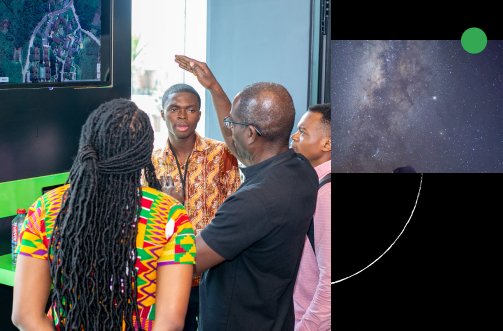
Mehran Kazemi
Research Areas
Authored Publications
Sort By
RADAR: Benchmarking Language Models on Imperfect Tabular Data
Ken Gu
Kumar Ayush
Hong Yu
Zhihan Zhang
Yuzhe Yang
Shwetak Patel
Max Xu
Mark Malhotra
Orson Xu
Evelyn Zhang
Tim Althoff
2025
Preview abstract
Language models (LMs) are increasingly being deployed to perform autonomous data analyses, yet their~\textit{\robustnessTerm}-- the ability to recognize, reason over, and appropriately handle data artifacts such as missing values, outliers, and logical inconsistencies—remains under-explored. These artifacts are common in real-world tabular data and, if mishandled, can significantly compromise the validity of analytical conclusions. To address this gap, we present RADAR, a benchmark for systematically evaluating data awareness on tabular data. RADAR introduces programmatic perturbations for each unique query table pair, enabling targeted evaluation of model behavior. RADAR~ comprises 2500 queries for data analysis across 55 datasets spanning 20 domains and 5 data awareness dimensions. In addition to evaluating artifact handling, RADAR systematically varies table size to study how reasoning performance scales with input length. In our evaluation, we identify fundamental gaps in their ability to perform reliable, data-aware analyses. Designed to be flexible and extensible, RADAR supports diverse perturbation types and controllable table sizes, offering a valuable resource for advancing tabular reasoning.
View details
Preview abstract
A vast amount of human discussion, storytelling, content creation,
and reporting now occurs on social media platforms. As such, social
media posts are often quoted on web pages as context. In this
paper, we argue that these quotations and their surrounding page
context provide a rich, platform-independent source of data for
studying the intersection of natural language and social media.
We introduce a taxonomy of quotation roles that categorizes how
social media posts are used within content. We release a dataset
of 38M social quotes derived from the Common Crawl, and role
labels for a subset assessed by human raters. We show that the
interplay of accounts, roles, and topics across the web graph reveal
valuable social diffusion patterns, and that roles can be predicted
with fine-tuned large language models from web context.
View details
Preview abstract
Structured Complex Task Decomposition (SCTD) is the problem of breaking down a complex real-world task (such as planning a wedding) into a directed acyclic graph over individual steps that contribute to achieving the task, with edges specifying temporal dependencies between them. SCTD is an important component of assistive planning tools, and a challenge for commonsense reasoning systems. We probe how accurately SCTD can be done with the knowledge extracted from Large Language Models (LLMs). We introduce a high-quality human-annotated dataset for this problem and novel metrics to fairly assess performance of LLMs against several baselines. Our experiments reveal that LLMs are able to decompose complex tasks into individual steps effectively, with a relative improvement of 15% to 280% over the best baseline. We also propose a number of approaches to further improve their performance, with a relative improvement of 7% to 37% over the base model. However, we find that LLMs still struggle to predict pairwise temporal dependencies, which reveals a gap in their understanding of complex tasks.
View details
Preview abstract
Remarkable progress has been made on automated reasoning with natural text, by using Language Models (LMs) and methods such as Chain-of-Thought and Selection-Inference. These techniques search for proofs in the forward direction from axioms to the conclusion, which suffers from a combinatorial explosion of the search space, and thus high failure rates for problems requiring longer chains of reasoning. The classical automated reasoning literature has shown that reasoning in the backward direction (i.e. from the intended conclusion to supporting axioms) is significantly more efficient at proof-finding. Importing this intuition into the LM setting, we develop a Backward Chaining algorithm, called LAMBADA, that decomposes reasoning into four sub-modules. These sub-modules are simply implemented by few-shot prompted LM inference. We show that LAMBADA achieves sizable accuracy boosts over state-of-the-art forward reasoning methods on two challenging logical reasoning datasets, particularly when deep and accurate proof chains are required.
View details
Tackling Provably Hard Representative Selection via Graph Neural Networks
Transactions on Machine Learning Research (2023)
Preview abstract
Representative Selection (RS) is the problem of finding a small subset of exemplars from a dataset that is representative of the dataset. In this paper, we study RS for attributed graphs, and focus on finding representative nodes that optimize the accuracy of a model trained on the selected representatives. Theoretically, we establish a new hardness result for RS (in the absence of a graph structure) by proving that a particular, highly practical variant of it (RS for Learning) is hard to approximate in polynomial time within any reasonable factor, which implies a significant potential gap between the optimum solution of widely-used surrogate functions and the actual accuracy of the model. We then study the setting where a (homophilous) graph structure is available, or can be constructed, between the data points. We show that with an appropriate modeling approach, the presence of such a structure can turn a hard RS (for learning) problem into one that can be effectively solved. To this end, we develop RS-GNN, a representation learning-based RS model based on Graph Neural Networks. Empirically, we demonstrate the effectiveness of RS-GNN on problems with predefined graph structures as well as problems with graphs induced from node feature similarities, by showing that RS-GNN achieves significant improvements over established baselines on a suite of eight benchmarks.
View details
KwikBucks: Correlation Clustering with Cheap-Weak and Expensive-Strong Signals
Sandeep Silwal
Andrew Nystrom
Andrew McCallum
International Conference in Learning Representation (ICLR) (2023) (to appear)
Preview abstract
The unprecedented rate at which the sizes of machine learning (ML) models are growing necessitates novel approaches to enable efficient and scalable solutions. We contribute to this line of work by studying a novel version of the Budgeted Correlation Clustering problem where along with a limited number of queries to an expensive oracle for node similarities (e.g. a large ML model), we have unlimited access to a cheaper but less accurate second oracle. Our formulation is inspired by many practical scenarios where coarse approximations of the expensive similarity metric can be efficiently obtained via weaker models. We develop a theoretically motivated algorithm in this setting that leverages the cheap oracle to judiciously query the strong oracle while maintaining high clustering quality. We empirically demonstrate gains in query minimization and clustering metrics on a variety of datasets with diverse strong and cheap oracles. Most notably, we demonstrate a practical application in text clustering based on expensive cross-attention language models by showing that cheaper (but weaker) embedding-based models can be leveraged to substantially reduce the number of inference calls to the former.
View details
